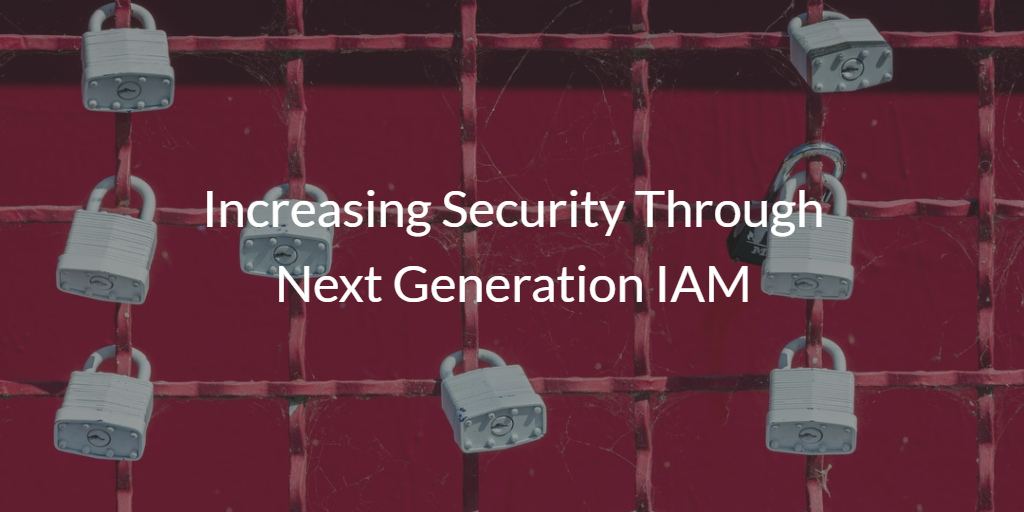Compromised identities are the number one way that hackers are gaining entry to IT networks.
It is the easiest, most direct way that a bad actor can access confidential digital data.
Unfortunately, it is happening far too frequently today – often times with terrifying consequences in terms of dollars and even in people’s personal lives. The good news is that enterprises with mature identity and access management systems experience half the number of data breaches, and they avoid around 5 million dollars in breach costs (CSO). As a result, IT admins are increasing security through next generation IAM (identity and access management) to help prevent identity theft and secure their organization.
It’s time to step up security. Before we look into a way to mitigate risks in today’s IT environment, though, we should look at how these challenges developed to get a better understanding of the situation.
Change Creates Challenges
When you really start to examine the risks we see today, the root of the challenges IT admins are facing becomes clear. It all revolves around the change that has occured in the IT landscape. The shifting and changing IT landscape is creating massive challenges for IT organizations. However, use of cloud services has also proved to be vital to an organization’s success. In fact, cloud solutions actually help a company grow nearly 20% faster than their counterparts who don’t use the cloud (Skyhigh). With that known, there’s no way that organizations can just ignore these tools.
One main issue admins are facing with these tools is maintaining universal control over their environment. This is a widespread challenge that is emerging at organizations all over. Before all of the recent change, IT organizations had seamless control over their user identities, systems, and network access. Since everything back then was located on-prem and was based on Microsoft® Windows®, admins could simply leverage Microsoft’s IT management tools Active Directory® and SCCM (formerly known as SMS) for all of their needs. These solutions helped IT organizations to centrally control user access, and as a result lock up security.
While there still could be identity compromises, there were a number of inherent safeguards. Access to the network was generally done in the office, so physical security played a larger role. Remote access often required two logins – one into the Windows machine and another into the VPN, so that too introduced some additional security. Identities were centrally managed by IT, policies set for password strength, rotation, and reuse, and with everything being Microsoft-based there was no compatibility issues with any resources.
This approach to identity management worked well for a number of years – essentially as long as the IT infrastructure was on-prem and homogeneous. But, as we all know, the IT market has changed rapidly since then, and many of those changes are quite profound. A great deal of on-prem applications were replaced by web applications. Google Apps (now known as G Suite™) and Office 365™ have made a significant impact and transformed on-prem email servers, productivity applications, and file servers. Mac® and Linux® systems started to replace Windows machines. On-prem data centers started to give way to AWS® cloud servers. File storage moved to the cloud and less expensive Samba file servers and NAS appliances. Instead of requiring physical access to the network via a wired connection, most organizations switched to WiFi. All of these changes, while beneficial to end users and the business, made it significantly more difficult to centrally manage user access. It’s clear that the seamless, centralized control admins used to have is much more difficult to attain today.
How to Handle Modern IT
Why are admins encountering difficulties when attempting to connect to these resources today though? In short, they are trying to manage modern resources with the same legacy identity provider that was built for the on-prem and Microsoft centric environments of the early 2000s. Active Directory just wasn’t built for the cloud and non-Microsoft solutions. As a result, the more these solutions enter the environment, the more IT organizations start to see increasing risk. Individuals begin having multiple identities that are out of IT’s control, resulting in exposed confidential data and potential compromise. Couple that with the sharply rising rate of security breaches at major and small organizations, and the writing on the wall becomes clear. IT admins need to start looking for different approaches to the identity and access management problem.

Increasing Security through Next Generation IAM
The good news for IT admins is that there are next generation IAM platforms that are solving these challenges and dramatically increasing security of identities. A modern approach to identity management can securely manage and connect user identities to the IT resources they need, regardless of provider, platform, protocol, and location. On top of that, a next generation IAM solution will step up security through one-way hashed and salted passwords, multi-factor authentication, password complexity settings, and SSH key management. All of these can significantly impact an organization’s security posture, and dramatically reduce the chances of an identity breach.
If that isn’t enough reason, the cost reduction, improved developer productivity, data center consolidation, and increased business agility and innovation are just a few more core reasons the cloud is growing (Suse).
If you would like to learn more about increasing security through next generation IAM, drop us a note. Our mission is to help admins better secure their organizations, so we are always happy to answer any questions that you might have.
Increase Security Through Next Generation IAM
